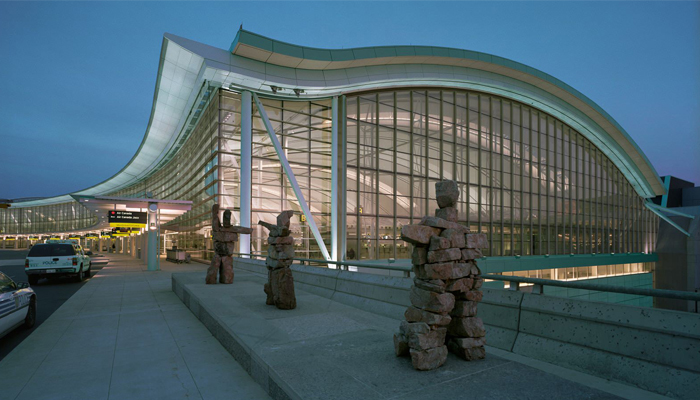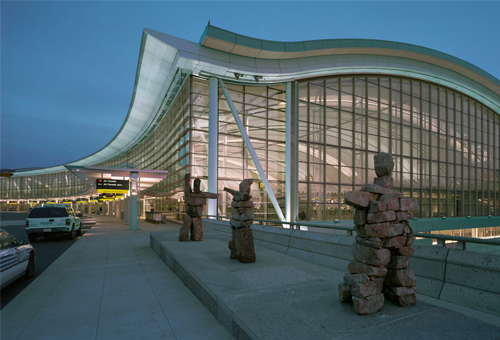Pearson is Canada’s largest and busiest airport, capable of dealing with millions of passengers every year. This fact is probably known to most Canadians. But what else do you know about this popular international airport? Do you know when it was established? Did you know that Pearson was not its first name?
Toronto Pearson International Airport has an interesting yet lesser-known history filled with fascinating facts. Go through this blog post to look at Pearson in a different light. It’s not just another airport.
Toronto Pearson Airport: History & Facts
History of Toronto Pearson International Airport
Established in 1937, the airport was built by the Toronto Harbour Commission. It was originally intended to serve as an alternate airfield to the downtown Toronto Island Airport now known as Billy Bishop Toronto City Airport.
How It Started
The federal government wanted to build an airport serving Toronto before Trans-Canada Air Lines began its operations (which was expected to begin in 1937). To find a suitable location, Toronto City Council formed an advisory committee in November 1936. Out of several suggested locations, the federals approved two sites: Malton and the Toronto Islands. It was decided that a seaplane and land airport would be constructed on the island and an auxiliary field would-be built-in Malton.
The land in Malton belonged to farmers who, upon agreement with land agents representing the Toronto Harbour Commission, sold their lots. A total purchase of 570 hectares was made. The Chapman farmhouse was the first office and airport terminal constructed. Later, in 1938, the farmhouse was replaced by a purpose-built wooden terminal building. At that time, the airport consisted of one grassy landing strip and two tarmac runways.

The Initial Design
During World War II, the Malton Airport served as the base of operations for No. 1 Elementary Service Flying School (EFTS) and No. 1 Air Observer School (AOS). In 1949, the airport got its third terminal on the western side of the second wood frame terminal.
The terminal could handle 400,000 passengers per year and had an observation deck on the roof accessible by visitors to let them watch takeoffs and landings up close. The airport later expanded to land near the hamlet of Elmbank.
The 1970s Disaster
The crash of Air Canada Flight 621 on July 5, 1970, near Pearson marked a dark day in its history. A miscommunication between Captain Peter Hamilton and First Officer Donald Rowland led to the plane’s wing spoilers being deployed too early, resulting in a sudden downward drop. This caused the plane to hit the runway, tearing off the engine and part of the right wing. Despite the pilots’ best efforts to get the plane back into the air, the damaged section started burning. Two and a half minutes after the initial impact, the damaged wing exploded and the aircraft crashed into a field near Castlemore Road and McVean Drive in Brampton, killing all 109 passengers.
Pearson Is Not Its Original Name
Pearson was known as Malton Airport when it started operating in 1939. In November 1958, the City of Toronto sold the airfield to the federal government. As a result, the Department of Transport started managing the airport which was renamed Toronto International Airport. In 1984, it was again renamed the Lester B. Pearson International Airport, after Lester B. Pearson, a Nobel Peace Prize laureate and the 14th Prime Minister of Canada.

Interesting Facts about Toronto Pearson International Airport
As mentioned, Toronto Pearson International Airport is not just another airport. Want to know why? Have a look at some of interesting facts.
- Terminal 1 measures over 346,000 m2, making it the largest airport terminal in Canada and the 12th largest in the world by floor space.
- Terminal 1 is home to the ThyssenKrupp Express Walkway, the world’s fastest-moving walkway.
- The airport handled 49.5 million passengers and 473,000 flights in 2018, making it the 30th busiest airport in the world by passenger traffic.
- It is the primary airport for the Greater Toronto Area and the entire Golden Horseshoe region.
- In 2018, Pearson handled 557,400 metric tonnes of cargo and processed over 45% of Canada’s air cargo.
- Pearson is the only airport in Canada with scheduled freighter service to Europe, Asia, the USA and Latin America.
- With 50,000 employees, this airport is the second-largest employment zone in Canada.
- It has five runways and 30 taxiways made of asphalt, concrete or some combination of the two.
- The airport provides the GTA with non-stop and same-plane service to more than 175 cities around the world.
- It is conveniently located 22.5 km (14 mi) northwest of Downtown Toronto. This location allows passengers a number of transport options for getting to and from the airport as it is directly connected to regional transit lines and major highways. This includes the UP Express, Toronto airport taxis and limos, public transit buses and ride-sharing services.
Toronto Pearson has come a long way from the modest Chapman farmhouse days. From being a secluded airport in the middle of nowhere to Canada’s busiest airport, Pearson is the perfect example of what planning, determination, foresight and engineering can do. We hope next time you visit Toronto airport; you will see it in a new light.

